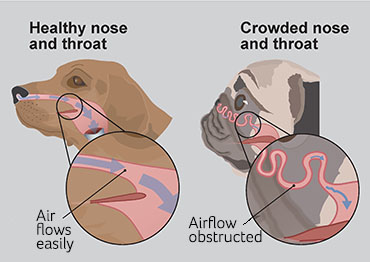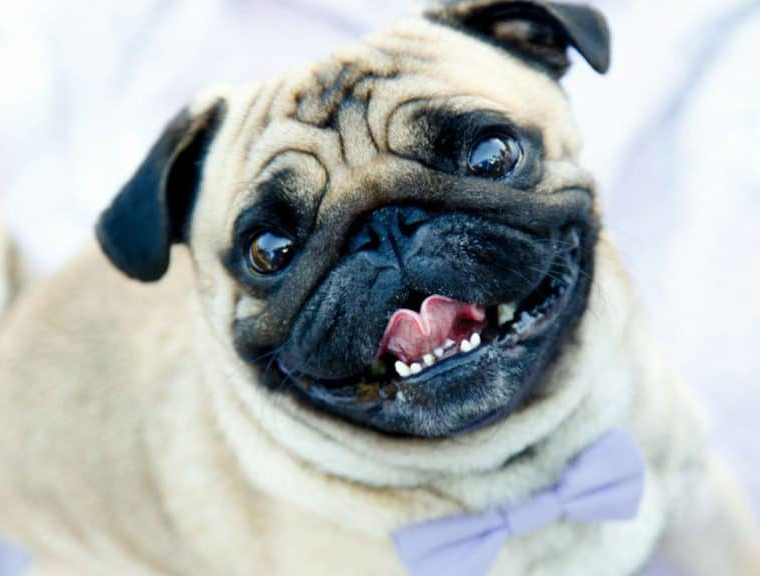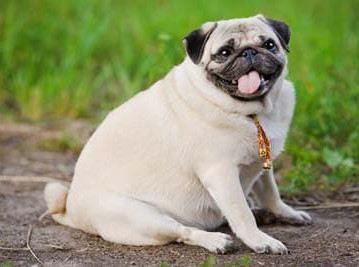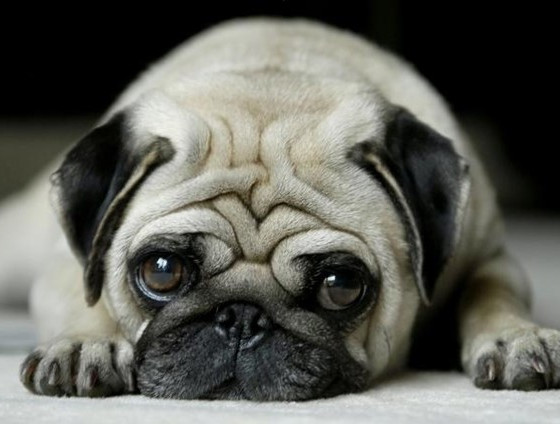Introduction
The Pug is a breed of dog originally from China, with physically distinctive features of a wrinkly, short-muzzled face and curled tail. The breed has a fine, glossy coat that comes in a variety of colors, most often light brown (fawn) or black, and a compact, square body with well developed and thick muscles all over the body.
Pugs are known for being sociable and gentle companion dogs. The American Kennel Club describes the breed's personality as "even-tempered and charming". Pugs remain popular into the twenty-first century, with some famous celebrity owners.
Description
While the pugs that are depicted in eighteenth century prints tend to be long and lean, modern breed preferences are for a square cobby body, a compact form, a deep chest, and well-developed muscle. Their smooth and glossy coats can be fawn, apricot fawn, silver fawn, or black. The markings are clearly defined and there is a trace of a black line extending from the occiput to the tail. The tail normally curls tightly over the hip.
| Description | Standard Color | Registration Code |
|---|---|---|
| Black | Check | 007 |
| Fawn | Check | 082 |
Pugs have two distinct shapes for their ears, "rose" and "button". "Rose" ears are smaller than the standard style of "button" ears, and are folded with the front edge against the side of the head. Breeding preference goes to "button" style ears.
This breed is often described by the Latin phrase multum in parvo, or "much in little" or "a lot of dog in a small space", alluding to the pug's remarkable and charming personality, despite its small size. Pugs are strong-willed but rarely aggressive, and are suitable for families with children. The majority of the breed is very fond of children and sturdy enough to properly play with them. Depending on their owner's mood, they can be quiet and docile but also vivacious and teasing.Pugs tend to be intuitive and sensitive to the moods of their owners and are usually eager to please them.Pugs are playful and thrive on human companionship. They also tend to have a snoozy nature and spend a lot of time napping. Pugs are often called "shadows" because they follow their owners around and like to stay close to the action, craving attention and affection from their owners.
Health Problems
Pugs are prone to many health issues. Most are related to their brachycephalic conformation. Fortunately, many of their potential health problems can be managed with the assistance of your veterinarian.
Respiratory Distress
The narrow airway of a Pug also means that they are more prone to respiratory distress.
If your Pug becomes stressed or distressed, they breathe even harder. This harsh breathing causes their already narrow airways to collapse further, which makes it even harder for them to breathe.
Without intervention, this can progress to the point of low oxygen levels and collapse.
Avoiding stress and keeping your Pug calm can help to avoid true respiratory distress. If you are noticing heavy or distressed breathing, contact your veterinarian or an emergency vet clinic immediately.
To help your Pug breathe more easily, your veterinarian may recommend surgery to widen the Pug’s narrow nostrils airway early in life. This is a simple procedure that can be done at the same time as spay or neuter surgery.


Dental Disease
Pugs have small jaws, but they have the same number of teeth as other dog breeds. As a result, many of their teeth are crooked and crowded.
Just like in people, crowded and crooked teeth can lead to increased buildup of food between their teeth. The result is increased risk for gingivitis, infection, and dental disease. Over time, this can lead to tooth loss and pain.
Daily tooth brushing is key to control and prevent inflammation. In addition, annual dental cleanings under anesthesia by your veterinarian starting at 1–2 years of age will help to identify infection and periodontal disease early. Ultimately, diseased teeth should be removed as early as possible to avoid pain, but diligent dental care can help prevent tooth loss.
Overheating
Because they are a brachycephalic breed, Pugs’ upper respiratory tract is much smaller than other dogs, so they often have to breathe through their mouths.
Since dogs use their airways to cool themselves, this increased effort for Pugs leaves them more predisposed to overheating.
To keep your Pug safe, follow these guidelines:
- Avoid taking your Pug outside during the hottest parts of the day
- Avoid strenuous exercise for your Pug during hot weather
- Provide consistent access to cool, clean water
Excess weight can increase breathing difficulties and make it easier for a Pug to overheat. Keeping your Pug at a healthy weight or on a weight-control diet to prevent obesity—when prescribed by a veterinarian—will help minimize risk.


Eye Injuries
A problem that is unique to Pugs is the risk of eye injury. The shape of the Pug’s skull makes their eye sockets very shallow, which means their eyelids are often not big enough to completely close. As a result, it’s easy for their eyes to get scratched, punctured, or even pop out.
All of these constitute an emergency, and your pet should be taken to the vet immediately. Without rapid treatment, these injuries can result in permanent damage or even loss of an eye.
